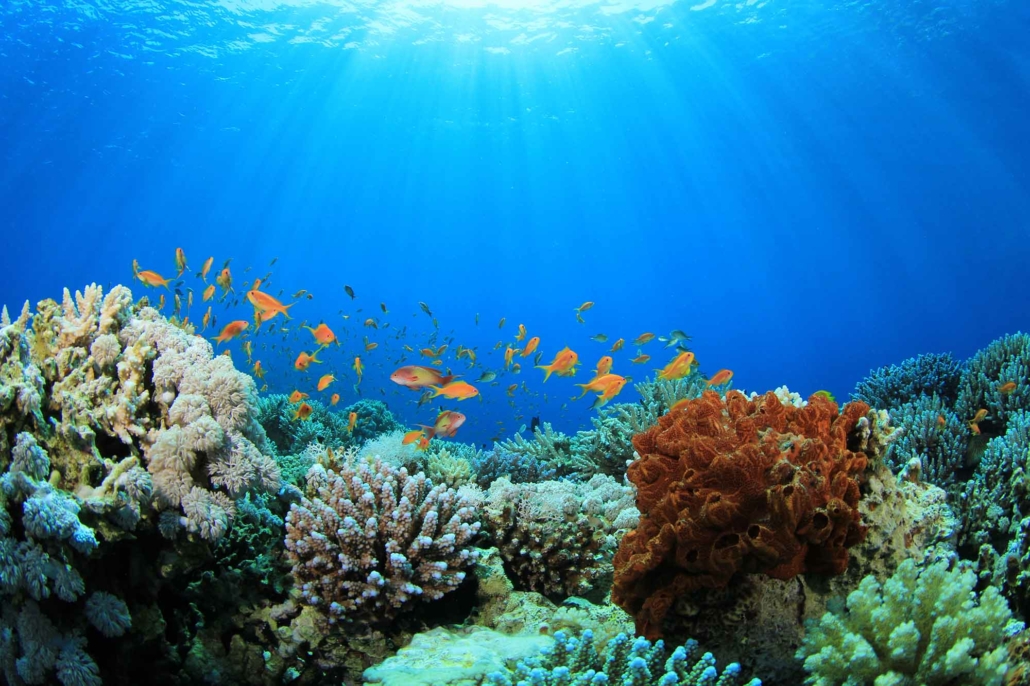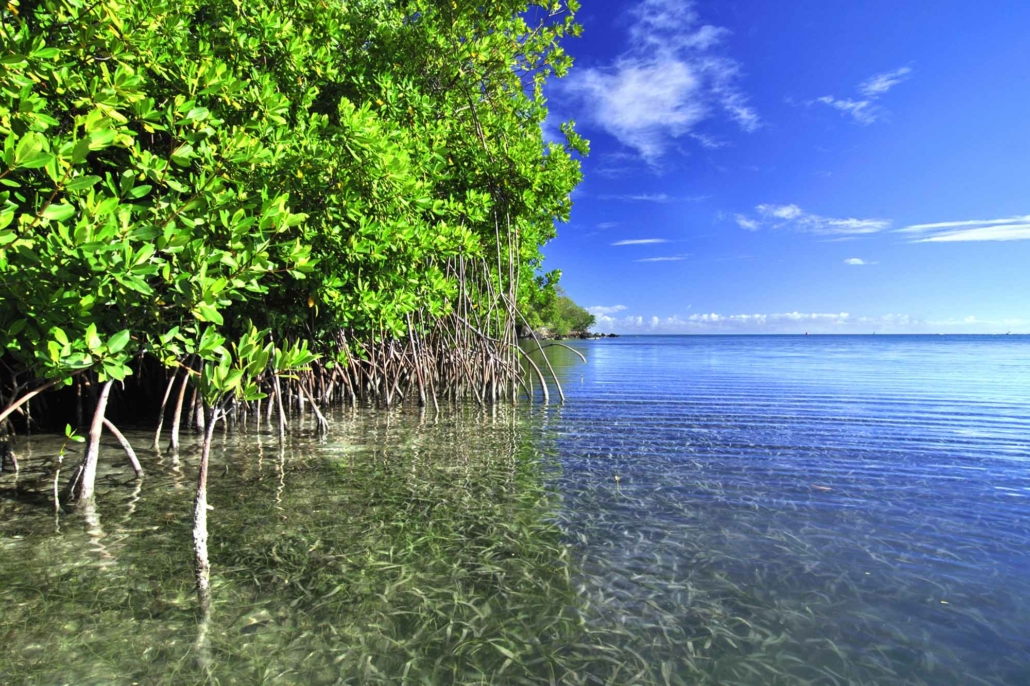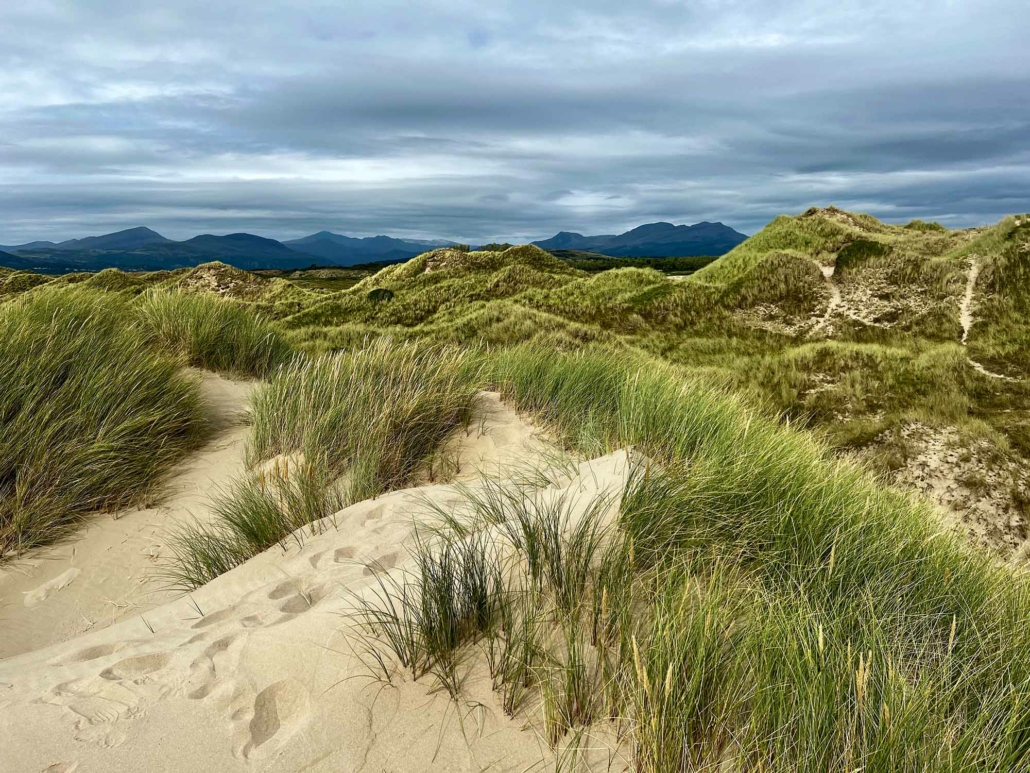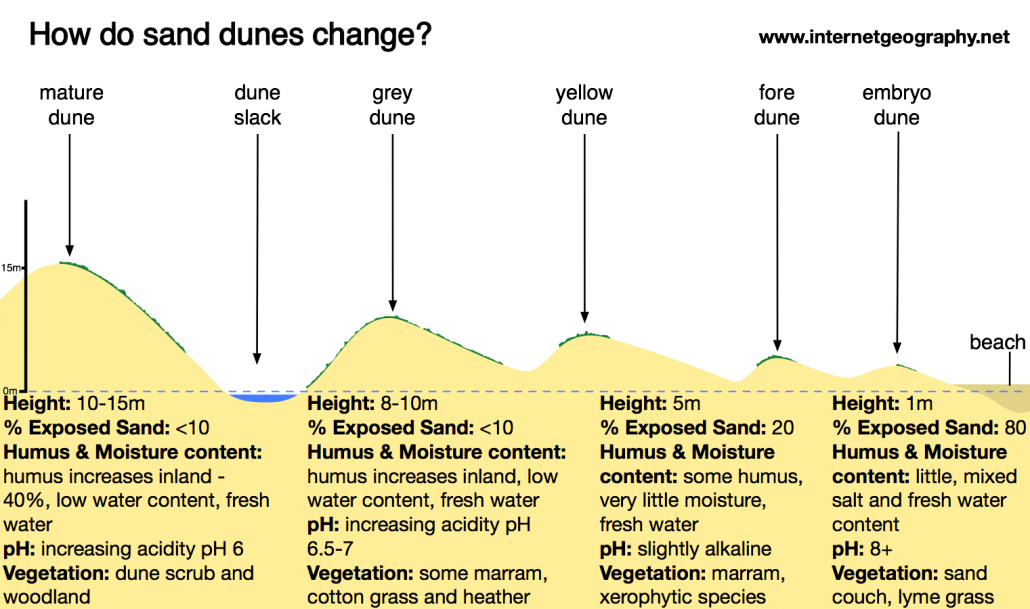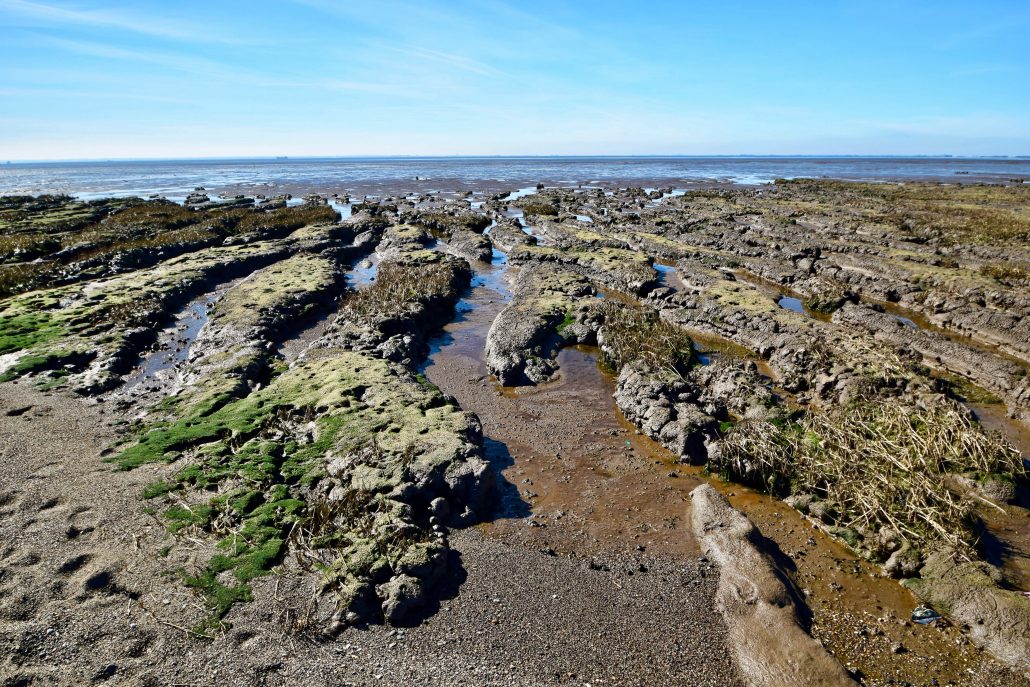Coastal Ecosystems
Many different coastal ecosystems exist, including coral reefs, mangroves, sand dunes and salt marshes.
Coral Reefs
What are Coral Reefs?
Coral reefs are vibrant underwater ecosystems found primarily in tropical and subtropical waters. These ecosystems comprise coral polyps and small marine animals that secrete calcium carbonate, forming hard, intricate structures over time. Coral reefs thrive in warm, shallow waters with clear, low-nutrient conditions, requiring sea surface temperatures between 17-33°C and salinity levels between 30-38 parts per thousand. Reefs are essential to marine biodiversity, supporting around 25% of all marine life, including fish spawning, growing, and breeding in the reefs. They are often called the “rainforests of the sea” because of their immense biodiversity.
Types of Coral Reefs
Coral reefs come in three main types, each with distinct characteristics and locations:
- Fringing Reefs: The most common type, fringing reefs, develop directly along the coastline, typically in shallow waters. They are found in areas like the Red Sea, the Caribbean, and parts of Southeast Asia. These reefs are highly accessible but vulnerable to pollution and human activities from nearby land.
- Barrier Reefs: Located further from shore, barrier reefs are separated from the mainland by a lagoon of deep water. The Great Barrier Reef in Australia is the most famous example. These reefs provide greater protection from ocean waves and storms but are susceptible to climate change impacts such as coral bleaching.
- Atoll Reefs: Atolls are ring-shaped reefs that form around submerged volcanic islands, often surrounding a central lagoon. They are found in the Indian and Pacific Oceans. Atolls are formed after volcanic islands subside, leaving only the reef to encircle the lagoon.
Why Coral Reefs are Important
Coral reefs provide numerous essential services:
- Biodiversity: They support vast numbers of species, from fish and invertebrates to algae and microorganisms, which are critical for maintaining marine food chains.
- Coastal Protection: Coral reefs act as natural barriers, absorbing wave energy and reducing coastal erosion, which helps protect coastal communities from storms and flooding.
- Economic Value: Coral reefs contribute to fisheries and tourism, providing livelihoods for millions of people worldwide.
- Carbon Sequestration: Through the process of calcium carbonate deposition, coral reefs play a role in sequestering carbon dioxide, helping to mitigate climate change.
Mangroves
What are Mangroves?
Mangroves are saltwater-tolerant trees and shrubs found in tropical and subtropical tidal areas, especially in estuaries and muddy coastal regions. These ecosystems require warm sea surface temperatures above 24°C and annual rainfall exceeding 1250mm. Mangroves are equipped with specialized roots, such as pneumatophores, which allow them to thrive in oxygen-poor, waterlogged soils. Major mangrove forests are found in countries like Indonesia, Brazil, and Australia.
Mangroves and Coral Reefs as Connected Ecosystems
Mangroves and coral reefs are closely connected, with each ecosystem supporting the other:
- Sediment Trapping: Mangroves trap sediment and prevent it from reaching coral reefs, which helps keep the water clear. Clear water is crucial for coral reefs as it allows sunlight to penetrate, enabling photosynthesis.
- Nurseries: Mangroves provide a safe habitat for juvenile fish, which later migrate to coral reefs as adults. This connection ensures a continuous supply of species to coral reefs.
- Protection: Mangroves reduce the energy of incoming waves, protecting coral reefs from the full force of storms. Coral reefs buffer wave energy, protecting mangrove shorelines from erosion.
Why Mangroves Are Important
- Coastal Protection: Mangroves, with their complex root systems, stabilise sediments and reduce the impact of storm surges, helping prevent coastal erosion.
- Carbon Storage: Mangroves store large amounts of carbon in their biomass and soils, making them essential for mitigating climate change.
- Biodiversity: Mangroves are home to various species, including fish, birds, crustaceans, and molluscs, contributing to marine biodiversity.
- Livelihoods: Mangroves provide timber, fuel, and a habitat for fish and shellfish, supporting local economies through fishing and sustainable resource use.
Sand Dunes
What are Sand Dunes?
Sand dunes are dynamic coastal landforms formed by wind deposition of sand, typically found along beaches and coastal plains. These ecosystems protect inland areas from storm surges and rising sea levels by acting as natural barriers. Sand dunes are colonised by vegetation adapted to salty, nutrient-poor conditions. Plants like marram grass help to stabilise the dunes by trapping sand with their roots. Vegetation that dominates sand dunes is typically halophytic (salt-tolerant) and xerophytic (drought-resistant).
Why are Sand Dunes Important?
- Coastal Defense: Sand dunes protect from coastal erosion and storm surges, acting as buffers between the sea and inland areas.
- Biodiversity: Sand dunes host a range of specialised plant and animal species adapted to the harsh coastal environment conditions.
- Tourism and Recreation: Many coastal areas with dunes are popular destinations for tourism and recreation, contributing to local economies.
You can find out more about sand dunes here.
Salt Marsh
What are Salt Marshes?
Salt marshes are coastal wetlands found in temperate regions, often forming in the upper intertidal zones between land and open salt water. Salt marshes are productive, fertile ecosystems. They form in upper coastal intertidal zones between land and open saltwater, such as behind a spit or in tidal river estuaries that are flooded regularly by the tides. Salt marshes develop in areas with high nutrients, plenty of sunlight, and regular tidal flooding. Salt marshes are dominated by salt-tolerant plants (halophytes), such as cordgrass, which help to trap and stabilise sediments.
Services Provided by Salt Marshes
Salt marshes provide several key ecosystem services:
- Coastal Protection: Like mangroves and sand dunes, salt marshes act as natural buffers, absorbing wave energy and reducing the impact of storm surges and coastal erosion.
- Water Filtration: Salt marshes filter and purify water by trapping pollutants and excess nutrients, improving water quality in estuaries and coastal areas.
- Carbon Storage: Salt marshes effectively sequester carbon and store large amounts of organic carbon in their soils.
- Biodiversity: Salt marshes provide a habitat for many species, including migratory birds, fish, and invertebrates. They are critical nursery grounds for many commercially important fish species.
Salt marshes are essential to coastal ecosystems because they protect coastlines, enhance biodiversity, and support fisheries.

